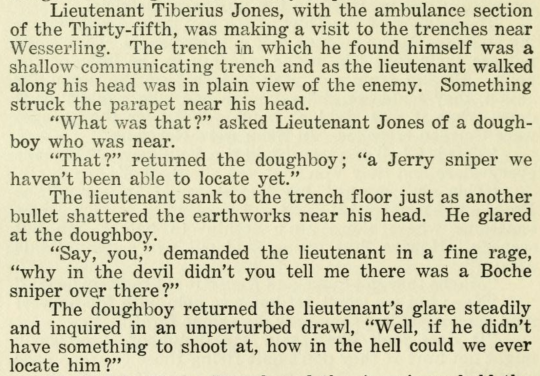August 31, 1918 – Full diary entry:
“Tonight we leave here.
Was shot at by German snipers several times. They use the explosive bullet.”
Again, fewer than 20 words from Robert and so much for me to unpack.
First, let’s look at Robert’s last three days. Two days ago a gas shell hit near him and he took in about eight lungfuls of gas. Yesterday he spent the night at a listening post out in No Man’s Land. The histories can call this a “quiet sector” all they want; this was some serious action by my standards.
I asked my new friends in the Meuse-Argonne group on Facebook about “explosive bullets” and found that this has been a contentious issue for literally 100 years. Here’s the bottom line from what I learned.
Bullets that actually exploded and bullets that expanded upon hitting their target were both outlawed by the Hague Conventions of 1899 and 1907. Both sides accused each other of using these tactics throughout the war. These bullets were notoriously less accurate than regular ammunition.
So while it’s possible some explosive or expanding bullets were used, it’s not likely. And it is believed that most or all reports of “explosive” bullets can be attributed to the terrible wounds caused by regular bullets, which in some cases “tumbled” through the air, resulting in devastating entry and/or exit wounds.
There are accounts in many of the unit and personal histories about snipers during this period when the 140th was in the trenches. From Heroes of the Argonne:

From A Youth in the Meuse-Argonne:
One sniper started working on us the second day of our tour. His post was halfway up the hill on our left front at a range of 400 to 500 yards, and 400 to 500 feet above us… He was a pretty good shot and had the disposition of a stepped-on rattlesnake. We soon learned to make our daylight rounds of the posts in a permanent crouch to keep our heads out of sight. Any infraction of those rules and you’d hear a sharp crack close beside your ear or be splashed with dirt from the parapet.
Where was Robert today? See the timeline.